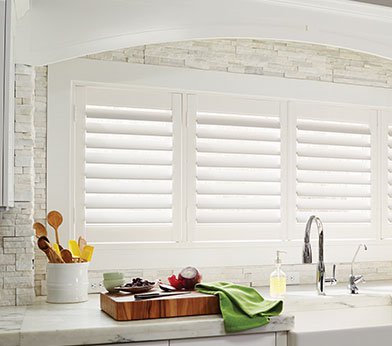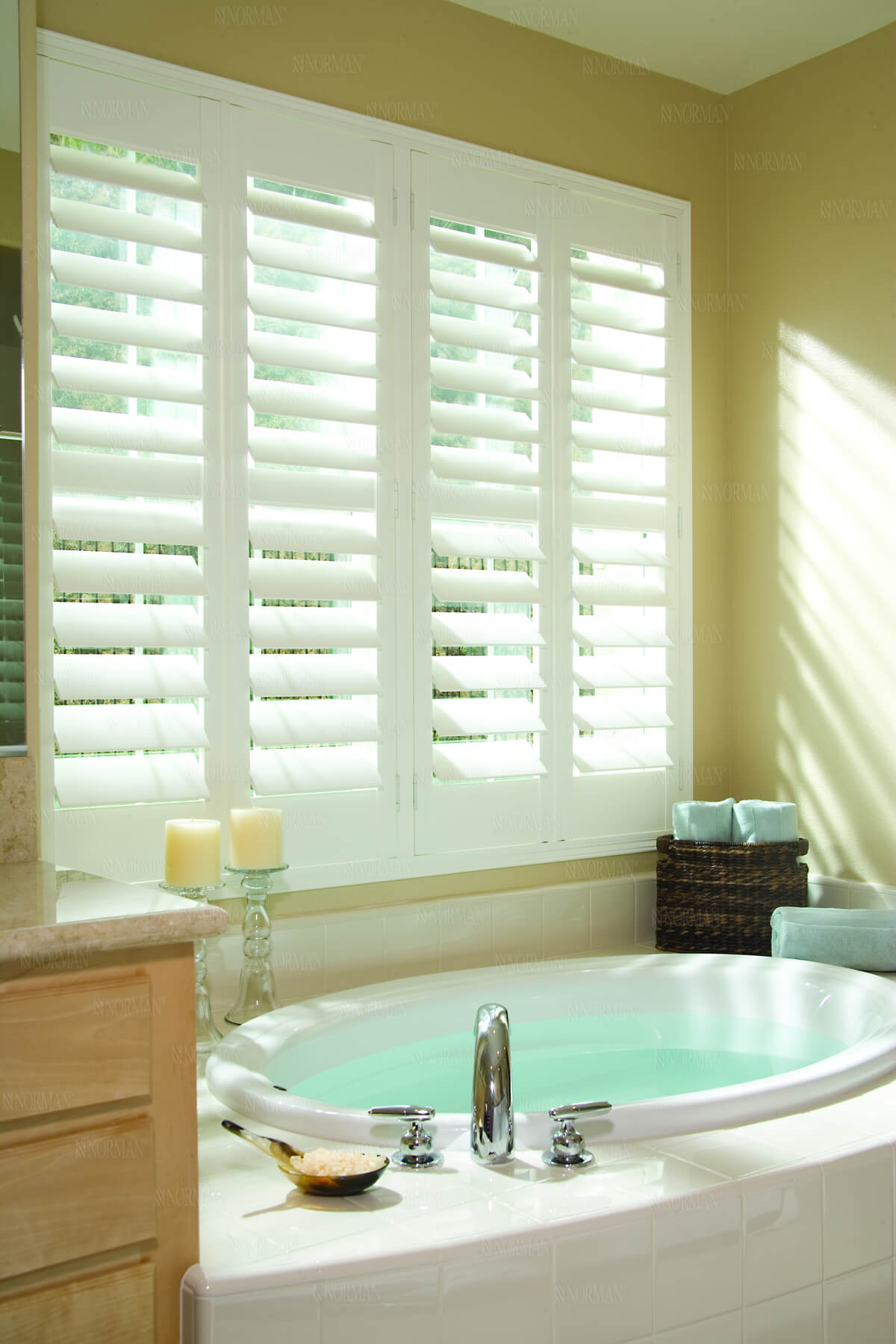Window Treatments Phoenix: Elegant Solutions for Any Kind Of Home
Window Treatments Phoenix: Elegant Solutions for Any Kind Of Home
Blog Article
What to Think about When Choosing Between Blinds and Shutters for Your Windows: A Thorough Analysis of Each Choice's Advantages
Picking the right window treatment is a decision that goes beyond mere appearances; it encompasses performance, maintenance, and long-lasting financial investment. Blinds offer a adaptable and cost-effective option, while shutters supply unrivaled longevity and design. Each alternative boasts distinct benefits that merit cautious factor to consider, especially pertaining to just how they align with your home's design and your personal preferences for personal privacy and light control. As we discover the vital distinctions and benefits of both options, understanding these aspects will be important in assisting you toward a decision that meets your demands and boosts your area.
Secret Differences In Between Blinds and Shutters
Frequently, home owners discover themselves deliberating in between blinds and shutters when picking home window treatments. Recognizing the essential distinctions between these 2 choices can considerably influence their decision-making process.
Blinds are typically made from products such as timber, artificial timber, aluminum, or plastic. Blinds are frequently more economical, appealing to budget-conscious property owners.
In contrast, shutters are solid window treatments that can be custom-fitted to the home window structure. Shutters provide better insulation and can improve the general power performance of a home.

Benefits of Blinds
Blinds use a functional and versatile option for homeowners looking for reliable window therapies. One of the primary advantages of blinds is their flexibility to different designs and choices.
One more substantial advantage of blinds is their simplicity of procedure. Numerous contemporary blinds come with straightforward mechanisms, consisting of cordless choices and motorized systems, making them accessible for any ages. This convenience is improved by their capacity to supply accurate light control, allowing homeowners to quickly readjust the level of sunlight going into an area.
Blinds additionally use outstanding personal privacy alternatives, as they can be totally opened up, partly slanted, or entirely closed, depending on the wanted degree of privacy. They are typically much more cost-effective than shutters, providing a budget-friendly option without compromising style or functionality. Finally, maintenance is straightforward, as many blinds can be cleaned with an easy wipe-down, guaranteeing that they remain an attractive attribute in any type of home for many years to find.
Benefits of Shutters
Shutters provide a distinct collection of advantages that make them an appealing selection for house owners seeking sturdy and elegant window therapies. One of the key benefits of shutters is their phenomenal toughness - blinds phoenix. Created from robust materials such as timber, vinyl, or composite, they are designed to stand up to the test of time and withstand damages from UV rays, moisture, and temperature level fluctuations

Shutters also provide improved privacy and light control. House owners can quickly change check my reference the slats to accomplish the preferred level of brightness while preserving privacy from the outside. Unlike blinds, which may flex or droop with time, shutters preserve their form and capability.
In addition, shutters can raise the worth of a home (window treatments phoenix). Their traditional aesthetic and resilience attract potential customers, making them a rewarding financial investment. In summary, click here to find out more the resilience, power effectiveness, privacy control, and capacity for increased residential or commercial property value make shutters an engaging alternative for home window therapies
Visual Factors To Consider
When picking home window therapies, visual considerations play an essential role in improving the overall layout and atmosphere of a space. Both shutters and blinds provide distinct aesthetic characteristics that can enhance different indoor designs, from contemporary to typical.
Blinds normally offer a streamlined, minimalist appearance, easily readily available in a variety of products and shades. This adaptability permits property owners to work with blinds with existing design, developing a unified appearance. Their vertical or horizontal slats can include a contemporary edge, making them ideal for urban settings.
On the other hand, shutters exude a traditional style that enhances rustic and traditional insides. Their strong framework and customizable finishes, such as wood spots or repainted alternatives, evoke a sense of eternity. Shutters can work as a statement item, attracting interest to the home window while offering a high end visual.
Ultimately, the option between shutters you could try here and blinds should reflect not only personal style but likewise the preferred environment of the space. By meticulously considering how each option aligns with the overall design vision, property owners can effectively improve their space's aesthetic appeal, ensuring a harmonious and welcoming environment.
Cost and Upkeep Variables
Price and maintenance are essential aspects to take into consideration when selecting between blinds and shutters for home window treatments. Blinds are usually more budget-friendly, with a large range of choices available at different rate points.
On the other hand, shutters have a tendency to lug a higher preliminary price due to their custom-made manufacturing and robust building and construction. Nevertheless, this financial investment may produce lasting savings, as shutters are usually more resilient and call for much less frequent replacement. They also provide exceptional insulation, possibly decreasing energy expenses gradually.
Blinds generally need routine dusting and periodic cleaning, while shutters can be wiped down with a damp towel for cleaning, making them simpler to keep. Inevitably, the option between shutters and blinds need to stabilize both initial financial investment and continuous maintenance requires to make sure a satisfying return on financial investment.
Final Thought

Blinds provide a economical and versatile service, while shutters provide exceptional sturdiness and style.Cost and upkeep are important elements to consider when choosing between blinds and shutters for window therapies. Blinds normally need regular cleaning and occasional cleaning, while shutters can be cleaned down with a moist cloth for cleansing, making them much easier to preserve. Ultimately, the selection between blinds and shutters need to balance both initial financial investment and continuous upkeep needs to ensure a satisfactory return on financial investment.
In summary, the choice between shutters and blinds hinges on numerous elements, consisting of material make-up, style adaptability, and cost.
Report this page